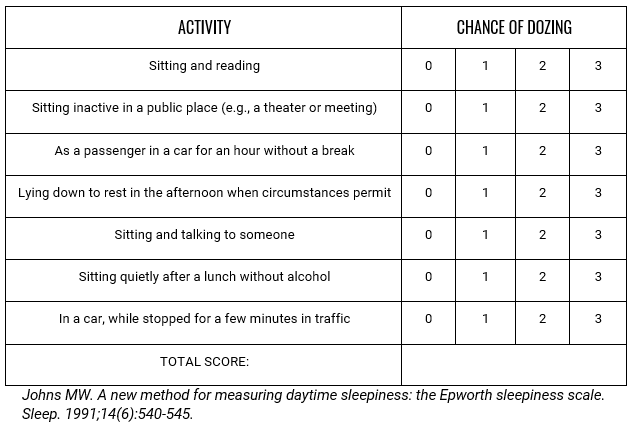
With 2021 being off to a somewhat “virtual” start, it seems almost natural for individuals to feel tired more frequently. Staring at a computer screen for hours on end can be both mentally and visually exhausting. But how do you know the level of sleepiness you experience is “normal,” and at what point should you seek professional guidance?
The average adult needs around eight hours of sleep each night for the brain and body to recover from the day’s activities. This recovery includes increased growth hormone secretion, which works to restore and rebuild the body, as well as aid in metabolism. Human sleep occurs in cycles, and these cycles repeat at least four times per night in the average adult.
It is when an uninterrupted, full night’s sleep results in continued sleepiness throughout the following day that we begin to think about the possibility of an underlying cause, such as a sleep disorder. Narcolepsy is one such sleep disorder, affecting one in 2,000 individuals. It causes a disruption in the sleep/wake cycle, resulting most commonly in excessive daytime sleepiness.
Symptoms of Narcolepsy
Narcolepsy is divided into two subtypes (Type 1 and Type 2). Depending on which subtype an individual has, symptoms may include:
- Excessive daytime sleepiness: Persistent sleepiness throughout the day, regardless of the amount of sleep obtained at night.
- “Sleep attacks:” Episodes of overwhelming sleepiness that can occur at any time without warning.
- Cataplexy (only present in Type 1 narcolepsy): Sudden, involuntary muscle weakness in one or multiple areas of the body, usually occurring during a strong emotional trigger such as laughing, crying, surprise or stress. Cataplexy can be as subtle as someone slurring their words, or as extreme as collapsing to the floor.
- Sleep-related hallucinations: Vivid images, sounds or feelings that occur while falling asleep (hypnagogic) or waking up (hypnopompic).
- Sleep paralysis: Temporary inability to physically move while falling asleep or waking up. This often occurs along with hypnagogic/hypnopompic hallucinations.
- Disrupted nighttime sleep: Frequent disturbances in the sleep cycle, causing multiple awakenings throughout the night.
- Automatic behaviors: Carrying out familiar tasks while awake but having no recollection of it afterwards.
While all of these symptoms may not be present initially, it is incredibly important to recognize the presence of any of them in order to seek out medical advice. It is currently estimated that only 1/4 of all people living with narcolepsy are diagnosed and receiving treatment. This is due to multiple factors, such as being misdiagnosed with other conditions that may list “sleepiness” or “generalized fatigue” as a major symptom. Certain examples often seen include the misdiagnoses of depression, seizures, schizophrenia, insomnia or obstructive sleep apnea. Patients also may not recognize symptoms of narcolepsy if they have not been educated on this disorder.
Complications of Undiagnosed Narcolepsy
Narcolepsy can significantly impact a person’s quality of life, especially if left undiagnosed or untreated. It may create the inability to operate a motor vehicle or heavy machinery safely. It can become difficult for individuals with narcolepsy to remain awake and alert enough to care for children or other family members in need. They can often feel as if they are “missing out,” due to uncontrollable sleep attacks during the day, or try to hide certain emotions like laughter or anger in effort to prevent a cataplexy episode.
When to Seek Medical Treatment
If you think you or a loved one may be experiencing symptoms of narcolepsy, you should seek out the help of a Certified PA. When you visit your Certified PA, you will initially be asked about your symptoms, as well as your regular sleep habits. A physical examination will need to be performed for accurate assessment, and if the findings from the history and physical exam raise concern for an underlying sleep disorder, a sleep study may be recommended to monitor brain wave function during sleep cycles. The sleep study is a painless test and is generally conducted over a 24-hour period to confirm a diagnosis of narcolepsy.
To help guide whether you or someone you know may need further evaluation for a possible sleep disorder, complete the questionnaire below. Patients are to rate their chances of dozing/falling asleep as follows: 0= never; 1=slight chance; 2=moderate chance; 3=high chance. A total score of 11 or greater warrants further evaluation for a potential sleep disorder.
Epworth Sleepiness Scale

Treatment Options
Although there is no known cure for narcolepsy, there are multiple treatment options aimed to help improve the individual’s quality of life:
- Schedule daytime naps during periods of excessive sleepiness.
- Follow a consistent bedtime routine.
- Avoid screen time (such as television, computers, tablets and cell phones) for at least two hours before bed.
- Medication.
There are many local and web-based support groups for people living with narcolepsy and other sleep disorders. There are also not-for-profit organizations, such as Project Sleep and Wake Up Narcolepsy, which provide resources for individuals with narcolepsy, in addition to their family and friends.

